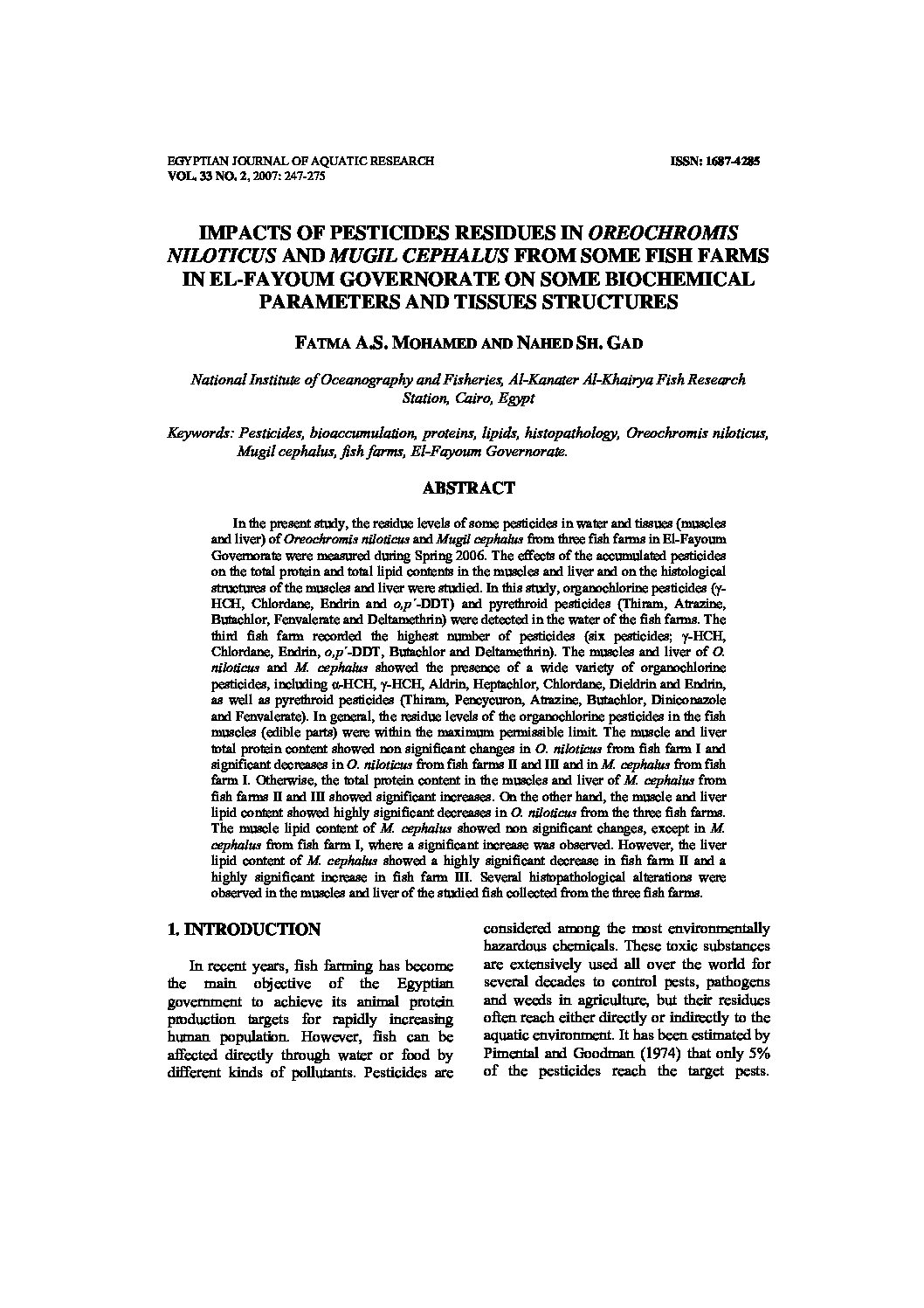Categories
vol-33IMPACTS OF PESTICIDES RESIDUES IN OREOCHROMIS
NILOTICUS AND MUGIL CEPHALUS FROM SOME FISH FARMS
IN EL-FAYOUM GOVERNORATE ON SOME BIOCHEMICAL
PARAMETERS AND TISSUES STRUCTURES
FATMA A.S. MOHAMED AND NAHED SH. GAD
National Institute of Oceanography and Fisheries, Al-Kanater Al-Khairya Fish Research
Station, Cairo, Egypt
Keywords: Pesticides, bioaccumulation, proteins, lipids, histopathology, Oreochromis niloticus,
Mugil cephalus, fish farms, El-Fayoum Governorate.
ABSTRACT
In the present study, the residue levels of some pesticides in water and tissues (muscles
and liver) of Oreochromis niloticus and Mugil cephalus from three fish farms in El-Fayoum
Governorate were measured during Spring 2006. The effects of the accumulated pesticides
on the total protein and total lipid contents in the muscles and liver and on the histological
structures of the muscles and liver were studied. In this study, organochlorine pesticides (γHCH, Chlordane, Endrin and o,p΄-DDT) and pyrethroid pesticides (Thiram, Atrazine,
Butachlor, Fenvalerate and Deltamethrin) were detected in the water of the fish farms. The
third fish farm recorded the highest number of pesticides (six pesticides; γ-HCH,
Chlordane, Endrin, o,p΄-DDT, Butachlor and Deltamethrin). The muscles and liver of O.
niloticus and M. cephalus showed the presence of a wide variety of organochlorine
pesticides, including α-HCH, γ-HCH, Aldrin, Heptachlor, Chlordane, Dieldrin and Endrin,
as well as pyrethroid pesticides (Thiram, Pencycuron, Atrazine, Butachlor, Diniconazole
and Fenvalerate). In general, the residue levels of the organochlorine pesticides in the fish
muscles (edible parts) were within the maximum permissible limit. The muscle and liver
total protein content showed non significant changes in O. niloticus from fish farm I and
significant decreases in O. niloticus from fish farms II and III and in M. cephalus from fish
farm I. Otherwise, the total protein content in the muscles and liver of M. cephalus from
fish farms II and III showed significant increases. On the other hand, the muscle and liver
lipid content showed highly significant decreases in O. niloticus from the three fish farms.
The muscle lipid content of M. cephalus showed non significant changes, except in M.
cephalus from fish farm I, where a significant increase was observed. However, the liver
lipid content of M. cephalus showed a highly significant decrease in fish farm II and a
highly significant increase in fish farm III. Several histopathological alterations were
observed in the muscles and liver of the studied fish collected from the three fish farms.







